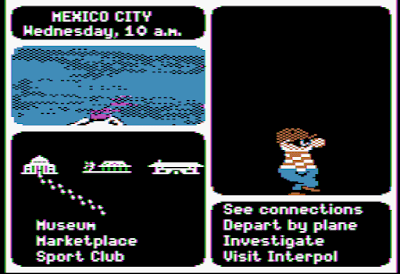 |
| Let’s travel the world and time for a special police force to catch a criminal! |
I won’t lie. Lost in Time was not my favorite game ever, but it wasn’t the worst, either. But we’ll get to that. During the gameplay, I never checked out the hint system, so that needs attention. Also, I want to check out the CD version that came out the next year.
But first, I need to discuss a theft. Not of valuable treasure, and not protected by wizard slaves like Yoruba. No, it’s puzzles.
Throughout this playthrough, I’ve been comparing this game to some others. See, it seems that nearly this entire game was stolen from the Leisure Suit Larry series, past and future to this game’s release. That makes sense, of course, since this game has the technology of time travel.
In no particular order, here’s some of the theft I discovered. Al Lowe, I believe you have grounds for a lawsuit.(I have ROT-13’d the ones involving LSL6, not wanting to spoil Alex’s playthrough.)
- Needing to use an unusual object to access an elevator door (LSL1,2)
- Needing to break open a window to obtain an item behind it (1)
- Tempting a beautiful creature with an apple (1)
- Being locked out of your own house (3)
- Needing items from the hold of a ship (2, 7)
- Having to pick up and store an impossibly large container for a beverage (2)
- Using soap without water to solve game puzzles (2)
- Taking a phallic-shaped log found outside of a house that is yours, but cannot access at the moment (3)
- Finding chains in a neighbor’s room in the bottom of a ship (2)
- Needing the use of a knife stored in a loincloth or underwear (1,3)
- Being dressed for a time period different than the one you are in (1,2,3,5,6,7)
- Needing to engage a lawyer in the transfer of land (3)
- The lawyer not being present when you call, so they leave you a note (3)
- Needing to use a hose to connect fresh water to another device (7)
- Rowing a boat somewhat unsuccessfully in the ocean (2)
- Landing on the beach, fully clothed, after having unsuccessfully navigated a ship in the ocean (2)
- Having trouble negotiating some cliffs near a beach (2)
- Cutting a square from some fabric to use to solve a puzzle (3)
- Opening a cabinet in a room that has a chain (2)
- Needing to dress in another woman’s set of clothes (2, 3)
- Engaging in really badly translated conversations between an unattractive male and an exotic female (2)
- Needing to use a wooden pin found under the main level of the ship (7)
- Defeat someone at the end of a jungle path with a flower (2)
- Ercnvevat n chzc gb erzbir n sbhy fhofgnapr sebz fbzrguvat nf ovt nf n obng (6)
- Ybbxvat guebhtu n ubyr va gur jnyy ng nabgure crefba (2,6)
- Arrqvat gb fgrny gur onggrel sebz n zbgbe iruvpyr (6)
- Ercnvevat n oebxra ubfr (6)
Joker Hint System
The game advertises a hint system where you click on the joker icon, and it will give some hints. There’s not much info given about this, except for a couple of lines in the manual, telling us that it only works in certain rooms, and you are limited to how many times you can do it.
It’s not new — they did it in their previous game, Ween, with an nearly identical implementation.
I never made use of the system during the playthrough of the game; I truly intended to suffer through it without any help, just like any other game we play on this blog. And I did finish it, without help, requests for assistance, or consulting a walkthrough. But what if I had used this system?
I restored some random games to see what help it would give me. And it isn’t really a hint system. No, it’s a walkthrough system. With our friend Melkior being much more helpful than he was in regular gameplay.
For example, the above image is when I engaged the system in the living room of the manor we had just inherited. Not exactly a hint, no, that’s a step-by-step to solve multiple puzzles.
The card I used in the vault of the manor was a little less direct, at the end. It still told me flat out about how to solve the problem of getting the container off the upper beam, but only gave me a very pointed hint as to what would happen to the cork after I shot it off.
But not every puzzle has a hint. Even though there’s a bunch of puzzles on this screen, the game offered me no help in what to do at this moment.
So, even in a game with puzzles that range from super-easy spoon-feeding to out-of-this-world moon logic, this hint system wasn’t well balanced. A little subtlety would have made it a fair addition to the game.
CD Version
About half a year after the release of the original version of the game, they released a version on CD. My original plan was to install and play this version, but soon after I downloaded it, I realized that I really don’t hate myself enough to do that. So while I played a little, I’ve mostly used someone else’s video playthrough to guide this conversation.
Nothing I say about the CD version will be used in the final scoring, don’t worry. This is just a little exploration.
First notable difference is the addition of voice acting, but it’s only a partial addition. Except for the first two screens, where Doralice talks to herself (where am I, what happened, etc…), the speech is only present during the 20-screen dialog cut scenes. The acting is not the worst I’ve ever encountered, but certainly not up to the level of Coktel’s parent company Sierra at the time. Remember, this was released the next year, well after the acquisition by Sierra, so it is very likely that work on this “upgrade” version started after that time.
Wait, I take that back. Yoruba might be the worst piece of voice acting I have ever seen in a game, no matter what people think about Cedric.
Honestly, this might be the first game I’ve ever played where I think leaving the voices off is an appropriate choice.
The music has been changed for this version as well. Well, changed is an understatement. There actually IS music in most of the game now, instead of background ambient noise with two or three notes. But again, not all change is good.
The background music as you start the game feels like an early draft of the music from Discworld Noir, the first draft that was later rewritten to include heart and soul afterwards. When you find your way up the post, by use of the knife carving a step, it blends in a nice John Phillip Sousa march.
When you make your way to the manor, the background music is both unnecessarily haunting, and way too overpowering. The music repeats when you find the underwater shipwreck, it can’t decide whether it wants to be a noir piece or a funeral march.
At the beach, the music was changed as well. Outside Makandal’s house and the surrounding area, the music track includes elephant trumpeting and windchimes hanging on our porch. The island was the worst change of them all, as that was arguably the best music in the diskette version, and now it’s rather annoying.
The other things that were lacking in the game weren’t changed, such as the lack of an introduction video, which would have been a welcome change from the literal 3 seconds from DOS prompt to gameplay that exists.
TL;DR for the CD version: even though it was priced the same as the floppy version, it isn’t worth the money. I’m very glad that I didn’t play this; it would have scored lower than the disk version. Again, this might be the only time I’ve ever said that about a game.
Final Rating
Well, time for the reckoning. As I write this, I’ll be spending a lot of time re-reading Alfred n the Fettuc’s review of Ween, as this game comes from the same company, same lead designer, and uses the same engine. Therefore, we have a baseline to start from.
As in many first-person games, nearly all of the puzzles are inventory-related, sometimes inventory manipulation. Some of them are good, many of them are not, and the game lacks a consistency throughout. The first 75% of the game (by their measurement) is probably 80% puzzle, 20% cut-scene. The last portion of the game swaps that balance, and while you suffered through some moon logic earlier in the game, the end becomes, at times, too easy.
There was a lot of discussion in the comments about what was definitely my favorite puzzle in the game. It was simple, and made a lot of sense, but wasn’t overly easy. This would be attracting a seagull to the roof of the fisherman’s shack in order to have her poke a hole in a flotation device, so it falls off the roof.
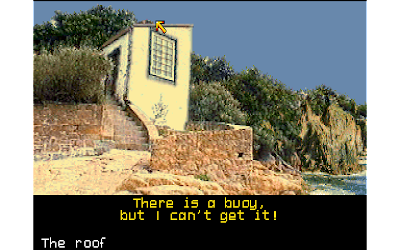 |
| Buoy, oh buoy, am I glad this is over with. |
The solution is to take a loaf of bread from inside the shack, douse it in an Asian-inspired fish sauce, and toss it up there to attract the waterfowl. While it pecks away at the bread, the beak also pecks at the floatation device, and causes it to fall to the ground.
My problem was simply that you had to know something that most people in America would not have known at the time of release, or really, even now. You see, the sauce was labeled in the game with the term that is used in Vietnamese cooking, Nuoc Mam. Even now, with Asian supermarket chains alongside traditional ones on our Main Streets, the ingredient is commonly called “Fish Sauce” and isn’t found under the other name. It was an easy solve for me, in this play through, as I googled the term immediately as the game presented it, but that wasn’t an option back in 1993.
But that can be forgiven, as we look at some of the less logical puzzles. For example, after needing to repair a hose to solve a puzzle earlier in the game, we then need to use a shaving razor to cut off a portion of the repaired hose, that, until that moment, we did not know was frozen in a rock hard crescent shape. We would then use that hardened section of hose much as a mugger would use a length of lead pipe, to… open a wooden barrel?
The wooden barrel became one of my triggers, because on different puzzles, it couldn’t be used because either it was closed up tight (removing water from the rowboat), or because it had a gaping hole in the side and would leak contents (such as the sand in front of the fireplace).
The game often had to make weak excuses why certain objects couldn’t be used to solve a puzzle, when a similar object could, or in at least one notable case, when you had an identical puzzle with a near-identical object available to you. Near the very beginning of the game, you manage to climb a support post in the boat by using a knife to carve a notch in the post, which you use as a step. Later on, in another section of the boat, you have another unclimbable post, but this time you have a dagger instead of a knife. That doesn’t work. The game also sometimes discarded items after you used them, if only to force you to find another solution when they repeated the same puzzle in another location. Need to lubricate a pump? Here’s some salad oil. Need to lubricate a door just up the stairs? Well, we threw away the bottle of oil, so here, use some soap instead.
It’s notable that there are no alternate solutions, as far as I can tell.
Other puzzles are repeated, too. But overwhelmingly, the game is just one locked door or box after another, unlocked mostly with keys but occasionally in other ways. My favorite was using the garden hose to rip open a door by securing it to the inside of an elevator and sending the car down.
Looking at Alfred’s scoring of Ween, it seems they didn’t learn some lessons from that game. “The other problem is that you stumble a bit too often on the solution instead of wanting to do something and successfully do it. That’s usually the issue with games with a single “action” button (as opposed to a list of verbs or a parser)” describes a problem in this game as well, there were at least a few puzzles I solved somewhat accidentally this way, or items I picked up not knowing I needed them. We will discuss more when we get to Interface, but the lack of a LOOK icon/command certainly made some of the puzzles either easier or harder than they needed to be, depending on the circumstances.
There was less pixel hunting, but still some. Depending on the brightness settings of your monitor, it seems, based on comments from the readers, but I’ll make an argument, at least, for the wooden shoe and the broken glass, both in the first screen of the lighthouse, as notable issues.
Back to that lack of consistency: in the first 75% of the game, you couldn’t die, and if you used an item in a wrong way, the game gave you another chance. For example, if you used the bread without the sauce, you could always go and get another loaf of bread. If you drank the bottle of cider instead of shooting off the cork, you could grab another one the same way you got the first one.
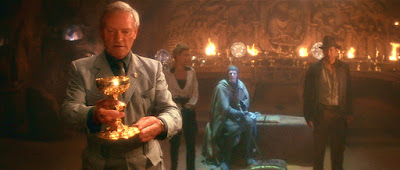 |
| He has chosen… poorly. |
In the last section, you could die, without warning, for not immediately figuring out how to steal something from Delia. And the final confrontation, a puzzle with absolutely no hints or clues, you have to (seemingly) choose a random object from the two in your inventory. Choose wrong, you die. Choose correctly, you win.
My score: 5, mainly because the designers didn’t learn from Ween, and the added unfair deaths in the end were jarring to the experience. I cannot justify matching the previous score for a less entertaining game.
Interface and Inventory
Coktel reused this inventory from Ween, which they adapted from Gobliins. That’s usually a good thing, when an interface evolves over time to grow to the needs of the genre. Sierra and LucasArts were both masters at this, and in modern-day gaming, software like the Unreal Engine is the backbone to many popular and successful titles.
In this case, they seem to have a habit of reusing the engine without fixing all the problems. Most notably, in this game, is the problem with inventory manipulation and interacting with some items.
See, they provide two different ways to access the inventory. The traditional way is to bring the mouse cursor to the top of the screen and then select the briefcase icon. The fastest way is to click the right mouse button. However, when you do that, it removes the inventory item you’ve already selected, so that you’re starting with a clean slate. This becomes a problem when you start having inventory puzzles that involve using one item on another, because you cannot access the inventory the way most users would choose to, because you need to keep the first selected item active as you choose another.
Then, there’s nested inventory items, which is sometimes just as clumsy. Go to the cider bottle in the inventory, hover over it, and you’ll see the cork. You won’t see that on the wine bottle, mind you. The sack at the end, with items inside, that you have to individually remove by clicking on each one, and then knowing to just right click to deselect the item, and then it shows up in a different part of your inventory.
There was at least one puzzle I encountered that clicking item A on item B was successful, but not clicking item B on item A.
The lack of a dedicated “LOOK” icon or action was a major detriment to this game, sometimes making puzzles easier, when your click did something you weren’t expecting, and sometimes harder, because not examining the objects prevented necessary hints and clues.
There are good features in the interface. The map feature is nice, and allows you to avoid some of the walking back and forth, which can get a little tedious on the various ship segments of the game. The joker hint system has the makings of a useful feature, but it lacks the needed subtlety to be a hint system rather than a walkthrough system.
My score: 4, matching the score this category got in Ween because it basically hasn’t changed, for better or worse.
Story and Setting
Does it feel like I’m just copying and pasting the review of their last game? Alfred n the Fettuc, for Ween: “Well… this one is tricky. I’m pretty sure the story as a whole made some kind of sense to someone at Coktel Vision (or they were under a lot of drugs), but after having completed the game, I still have little clues about…”
I can’t really say it better myself. The story does make sense, actually, but has almost no bearing on the gameplay. The game is advertised as a thriller where the heroine’s life is in danger, but that doesn’t really happen until the last scene of the game. The first half is “hey, look, here’s some random items, and they’re not nailed down. I wonder what they do?” Someone could conceivably open the game box, throw away the manual, and start playing the game right away without the benefit of any introductory exposition.
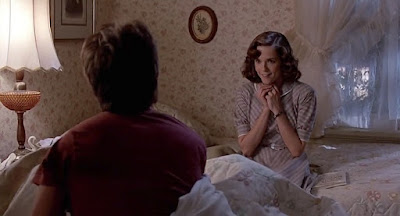 |
| I wish this game would make like a tree, and get out of here. |
It is rather an inventive concept, at least on paper. Time traveling to save your life. Back to the Future, but without the part where your mom tries to sleep with you.
The settings themselves are unique, and there are three main lands, all distinct from each other. A pirate ship, a French villa, and an exotic jungle. They aren’t really fleshed out much, though. You inherit a house, and can only visit the living room or the well just outside. There’s a crypt on the property, and all we can see is where it is used as storage for alcoholic beverages. The ship is just repetitive. I strongly suspect that they wrote the plot synopsis, designed the three locales, and then just added random puzzles to delay gameplay.
My score: 4, because much like watching an adult video, there may actually be a plot there, but you don’t need to keep track of it to succeed, and you are given very few rewards for doing so. It was an inventive idea, but relegated to the deep background.
Sound and Graphics
They wanted to go state-of-the-art, with that fancy video capture thing their competitors (and new parent company) had been using with varying degrees of success. But while the short video animations of Doralice picking up an item or walking down steps may have been prime, the underlying game was a hodge-podge of unconnected styles. The game starts on a ship, drawn using nothing but straight lines and copy-and-paste features. We then go to an estate, where the backgrounds are nearly all scanned photographs of actual buildings and scenes. From there, we go to an exotic jungle, with vivid colors and freehand art. The lacking keyword in this game, once again, is consistency. I really wish this game had used the bright, vivid colors of Ween, but we can’t have everything.
The cartoonish flags on the realistically-drawn pirate ship and the variation from cartoonish inventory items to realistic ones also affected the consistency.
The same goes for the background music. At the start, it’s simply a few notes, not enough to qualify even as muzak in an elevator. At the last segment of the game, there’s actually some musical scoring, but by this time, it’s too little, too late. (Ahem, it lacks consistency.)
A comment I put on one of the early posts still rings true to me now: “…the background music is mellow and unobtrusive, but almost too non-existent. It’s not much better than no music at all. It doesn’t set the mood for me, but it doesn’t ruin it, either.”
My score: 4. I agonized over this, but compared to a dozen other games first, for consistency.
Environment and Atmosphere
Even with the flaws in other categories, the game managed to set the scene. I felt like I was on the boat, even though some views out of the porthole would have been nice. The passable music and sound effects made the inherited property feel at least a little exotic. In the last section, the artistic jungle wasn’t as fleshed out, but the addition of music helped to correct part of that.
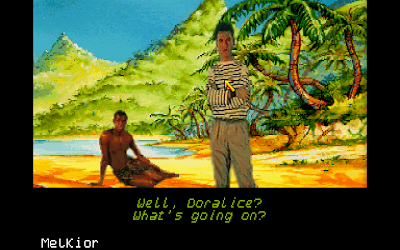 |
| Slightly lower-res people, non-proportionally placed on a hand-drawn jungle scene is par for the course in this game |
At times, the different boat sections did feel like it was too much of the same view, a brown wall on this side, and another on that side. Heck, even when you got to the red velvet walled luxury sections of the boat, it still just felt repetitious. The inside of your house being only one screen was somewhat disappointing, it felt no larger than the fisherman’s shanty, even though from the outside it was a lot more impressive.
Again, they didn’t learn from the past. From Alfred’s review of Ween: “ I can’t help but feel like the developers should have chosen a direction and stick with it instead of trying to alternate between serious and goofy.” So, while I wouldn’t call the island sequence goofy, the quote still fits: the visual and contextual environments didn’t mesh well together. Are we using photo quality art, or hand-drawn? Are we in a static world where nearly no one exists, or are we going to be interacting with handfuls of people at once? The game ran hot and cold.
My score: 4. The lack of consistency (I do like that word) keeps you from getting fully engaged in the game world, and except for the ship, the locations aren’t fleshed out enough.
Dialog and Acting
Well, this might be the game’s weakest department.
 |
| A look inside the Coktel Vision offices during the English translation session. |
The writing might have been good in the original language, but in the translated, English-language version, the writing comes off as too formal at times, as though it was translated through an early version of the Babel Fish translator. It was never proofread by anyone who spoke fluent American English, which is disappointing, when you realize it was published and distributed by a company based out of Oakhurst, California. At times, these poor translations, combined with the lack of a LOOK function, made this a guessing game or a brute-force exercise. There was at least one French idiom translated into English literally, which destroyed the meaning and made the resulting text nearly useless.
The physical acting by the models was limited and repetitive, both a product of the time (trying to wedge as much as possible onto a few diskettes) and probably either budget constraints or laziness. No matter where we were, on the ship, in the jungle, or elsewhere, we saw the same exact image of Dora’s face in nearly all conversations. Yes, this is more of a complaint for the graphics and environment categories, but I mention it here because of the lack of acting.
Yet, there’s one thing I did appreciate in this game, and I suspect it’s controversial: especially in the first half, I love how the game was sarcastic to the player, sometimes to the point of being flat-out mean. I guess I’m just a masochist, because I liked it.
My score: 3. I mean, seriously, I can’t give it a higher score than Blue Force.
Final Score
(5 + 4 + 4 + 4 + 4 + 3) / 0.6 = 40. I can’t justify this having the same score as another of their previous mediocre titles, Inca, when they failed to improve their efforts a year and a handful of titles later. So I’ll be removing a discretionary point, to make this 39.
This feels right, and even generous. It’s 2 points higher than Blue Force, it’s not the trainwreck of the Les Manley games (at 30 and 31), and yet, graphically and musically at least, it’s an inferior game. The fact that it comes one point below Codename: ICEMAN seems right, because that game mixed similar locals (a beach, an underwater boat, and a foreign land) with a better mix of graphics, sound, and writing to make you feel more engrossed in the game world.
This means a radioactive treasure chest of CAPs goes to both Agrivar and Andy_Panthro, with guesses of 40 and 38. The average guess was almost 48, so most of you had higher hopes for the game, but also, based on the comments, most of the guesses were blind stabs in the dark, without knowledge of the game.
This wasn’t a wasted experience for me. No doubt, I will never, ever play this game again, but I don’t regret having tried something I might not have noticed in the past. If it had been in the hands of a competent game designer, this had the potential to be a real winner.
CAP Distribution
110 CAPs to Michael
- Blogger Award – 100 CAPs – for playing through Lost in Time for everyone’s enjoyment
- Psychic Prediction Award – 10 CAPs – for being the closest guesser to the Plundered Hearts PISSED rating
70 CAPs to MorpheusKitami
- Classic Blogger Award – 50 CAPs – for blogging through Gram Cats for everyone’s enjoyment (except for their own…)
- True Companion Award – 20 CAPs – for playing along with Lost in Time
50 CAPs to Joe Pranevich
- Classic Blogger Award – 50 CAPs – for blogging through Plundered Hearts for everyone’s enjoyment
30 CAPs to SpanishCoktelVisionFanClub
- Cedric the Owl Award – 20 CAPs – for being a co-blogger in the comments, accompanying us on the journey while showing never-wavering loyalty to Muriel Tramis
- Babelfish Award – 10 CAPs – for helpfully translating text from other ports of the game, researching what some phrases and words were meant to emote
10 CAPs to Andy_Panthro
- Psychic Prediction Award – 10 CAPs – for being the closest guesser to the Lost in Time PISSED rating
10 CAPs to LeftHandedMatt
- Psychic Prediction Award – 10 CAPs – for being the closest guesser to the Gram Cats PISSED rating
10 CAPs to Lisa H.
- Tribal Leader Award – 5 CAPs – for knowledge of African cultures
- Soapy Sales Award – 5 CAPs – for an in-depth explanation of the use of dried soap as a lubricant
5 CAPs to Ken Brubaker
- Cutting Remarks Award – 5 CAPs – for noticing in detail the visual discrepancies of the knife and the hand holding it in different views and animations
5 CAPs to Leo Vellés
- Doppelgänger Award – 5 CAPs – for visually identifying the inspiration for the Doralice character
#Lost #Time #Jokers #Alternate #Version #Final #Rating
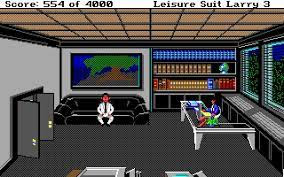
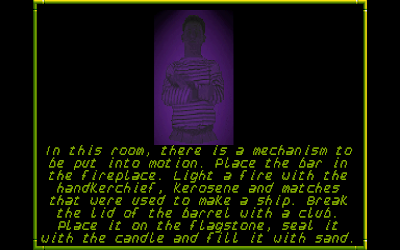
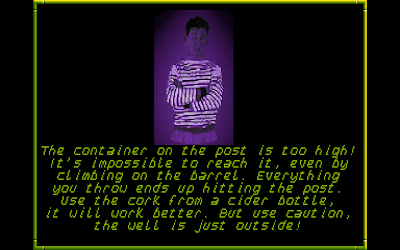
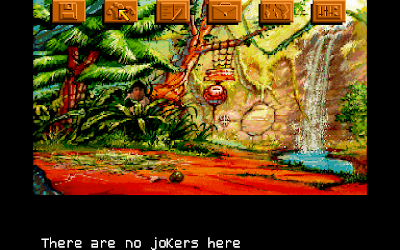
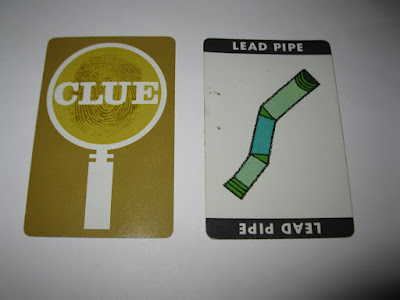
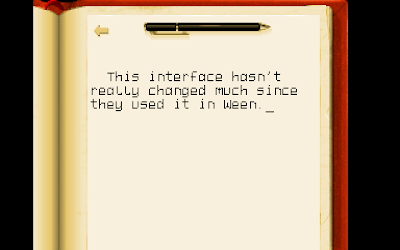
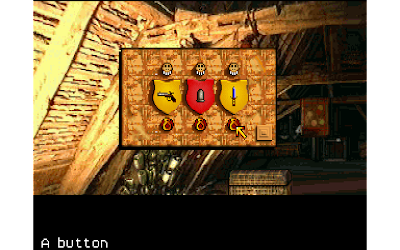
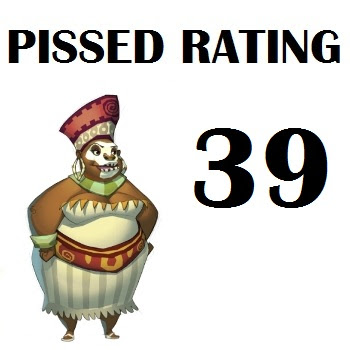

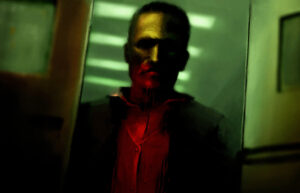


More Stories
Todd Howard Has No Plans To Retire, He’s Having “Too Much Fun”
Nintendo Confirms Switch Successor Announcement Is Imminent
Switch successor to be announced by March 31, 2025; Switch software-focused Nintendo Direct set for June